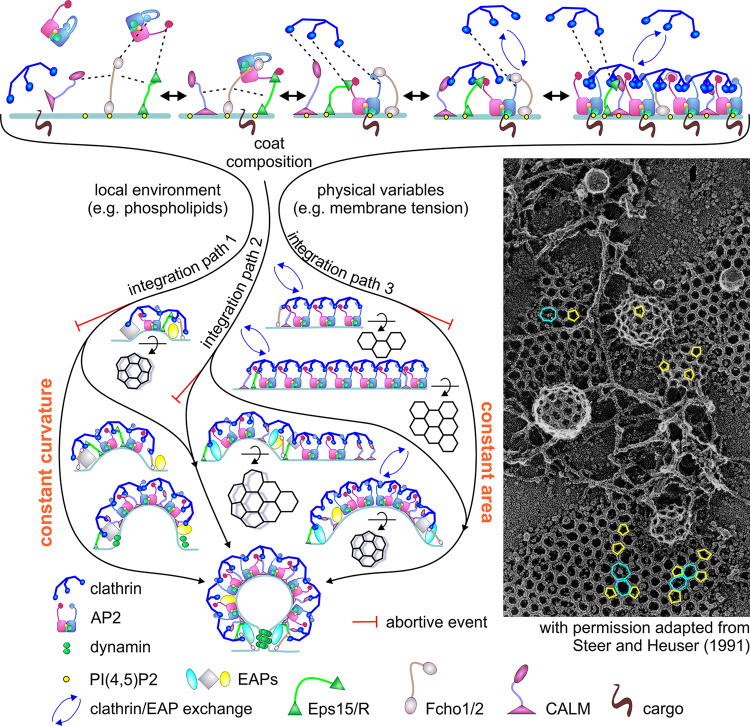Figure 4.
A more dynamic and flexible model for CCP initiation, stabilization, and maturation. Top: Multivalent interactions between variable subsets of AP2-interacting EAPs (e.g., Eps15, Fcho1, ITSN, and/or NECAP) regulate the nucleation and stabilization of nascent CCPs. Cooperative clathrin lattice assembly further reinforces opportunities for avidity and matricity to stabilize growing CCPs. During CCP assembly and maturation, clathrin, AP2, and EAPs engage in multivalent, transient, and competitive interactions, as detected by rapid exchange of both clathrin and EAPs (blue arrows). Middle: Depending on the local environment, the nature of cargo, or even the state or type of the cell, the effects of the clathrin lattice, BAR-domain–containing proteins, hydrophobic insertions, and molecular crowding could be integrated, to variable and in part interchangeable extents, to facilitate CCP invagination by one of several pathways. Path 1 allows for curvature generation concomitant with CCP growth. Path 2 allows curvature to develop (potentially through a heptagonal intermediate (Heuser, 1980), as illustrated) at the edges of flat lattices, which can serve as nucleating platforms for formation of multiple CCVs (i.e., nonterminal events). Path 3 involves the conversion of flat lattices to curved pits requiring rapid clathrin exchange and rearrangements of the clathrin lattice. Each of these paths is subject to an “endocytic checkpoint” that results in the abortive turnover of nonproductive CCPs. The exact molecular or physical nature of factors sensed by the endocytic checkpoint and the mechanisms for turning over abortive CCPs remain to be determined. Inset shows an image from Steer and Hauser (1991) generously provided by John Heuser) showing evidence for the coexistence of each of these pathways, from quick-freeze, deep-etched, and rotary-shadowed micrographs that show the structural diversity of CCPs on the PM of cultured epithelial cells. Pentagons (yellow) and heptagons (cyan) were observed, frequently adjacent to each other, in curved coats and/or on flat lattices potentially starting to gain curvature.

